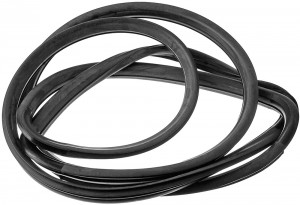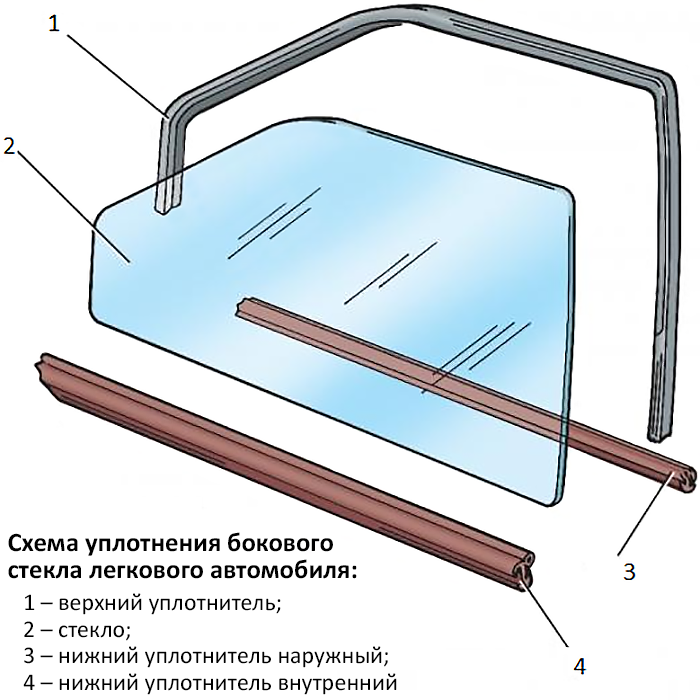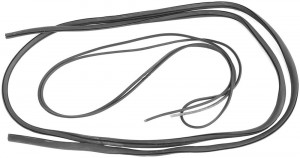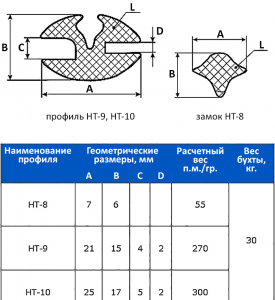
For the installation of automobile glass in body elements, special parts are used that provide sealing, fixation and damping - seals. Read all about glass seals, their types, design features and characteristics, as well as the selection and replacement of these elements in the article.
What is a glass seal
A glass seal is a rubber product in the form of a special profile tape designed for mounting (fixing and sealing) car glass in a binding
To protect the car interior or the internal volume of the cabin of automotive equipment from negative environmental factors while maintaining the necessary visibility, glasses are used - wind, rear, side and others. During the operation of the vehicle, the glass is subjected to significant and variable vibration loads, shocks and shocks, so they must have a tight fit in the binding formed by the body elements, and at the same time have a vibration decoupling with the body. All this is ensured by the use of special elements - rubber glass seals.
The glass seal performs several functions:
● Fixing the glass in the window cover;
● Damping of vibrations, shocks and shocks transmitted to the glass from the body;
● Glass seal - protection against the penetration of air (and gases in general), water, dirt, dust and small objects at the point of contact of the glass with the body;
● Providing the necessary aesthetic qualities;
● In windows that perform the functions of an emergency exit - ensuring the rapid dismantling of glass from the binding.
Glass seals make a significant contribution to the normal operation of the vehicle, tractor, special and other equipment, providing comfort in the cabin or cabin. A damaged or lost seal must be replaced as soon as possible, but before going to the store for a new seal, you must have at least a minimal understanding of the types of these parts, their design and features.
Device, types and features of glass seals
All glass seals have a fundamentally identical design: it is a rubber band (split or closed) of a complex profile, which is mounted on the outside of the edge of the body part, and the inner side holds the glass. The seal is made of various types of rubber, which combine high elasticity, resistance to temperature extremes, water and gas tightness, high strength.
Glass seals are classified according to various criteria - purpose, installation method, type of profile and special functional features.

Glass seal profiles
According to the purpose, seals are:
● For windshield;
● For rear window and tailgate;
● For side drop-down windows;
● For side rigidly installed glasses;
● For hatches;
● For glasses that serve as emergency exits.
Seals for different glasses differ in size, design features, installation method and profile.
All seals (with the exception of elements for lowering side windows) are of two design types:
● Closed (ring) and split for a specific vehicle model;
● Split universal.
The first group includes rubber products designed to install the windshield of a car of a certain model or model range. Such seals have a special configuration, they can also have a certain profile that takes into account the characteristics of the glass and the body parts in contact with it. The second group includes parts that can be used on various equipment, most often buses, trucks, tractors, etc.
There are three types of side window seals:
● Main (upper) - installed in the upper part of the window cover, capturing the front and rear, provides sealing of the window;
● Lower outer - installed in the lower part of the binding from its outer side, protects the inner cavity of the door from water, dust and dirt;
● Lower inner - installed in the lower part of the binding from its inner side.
The lower seals also clean the glass surfaces from dirt. This is ensured by applying a fabric or a soft brush with a short thief to the surface of the sealant, for this design the parts are often called velvets.
Seals are installed on special protrusions (flanges) of the window cover, formed on body parts, holding the glass in the groove provided for this. Fixation of the seal is provided in two ways:
● Due to its own elasticity;
● Due to the auxiliary spacer part - the lock.

Scheme of sealing the side window of a car
The first method is used to install seals of short length, most often - the lower seals of the side lowering windows. Such parts are put on the flange of the binding, crimping it on both sides, sometimes additional protrusions are used that are installed in the holes.
Locking with a lock is used in all other seals. In this case, the seal consists of two parts: a sealing tape and an auxiliary tape of small cross-section. The sealing tape is installed on the window binding and holds the glass, and the lock is inserted into a special groove in the main tape - it acts as a wedge that ensures the spacer of the seal and jamming the glass.
In the seals for windows that perform the function of an emergency exit, the lock is located on the side of the passenger compartment so that free access is provided to it. To quickly remove the lock, a metal ring connected to it is provided - by pulling this ring, you can remove the lock, as a result of which the seal will loosen and the glass can be easily squeezed out or pulled into the passenger compartment, opening the exit window.
Installation of all glass seals is ensured by giving them a cross-section of a complex shape. Typically, the profile consists of a number of longitudinal grooves, ridges and straight or curved surfaces that perform various functions:
● Groove for the flange of the window cover;
● Groove under the edge of the glass;
● Groove under the lock;
● Exterior decorative surface;
● Internal decorative surface;
● Groove and surface for mounting a decorative frame;
● Additional grooves and ridges to ensure the necessary characteristics of the seal.

Glass seal with lock

Standard glass seals with lock
The grooves for the flange of the binding and the edge of the glass can have a simple or complex profile - with longitudinal protrusions or grooves for additional sealing and damping. Exterior and interior decorative surfaces are usually smooth, may have a gloss or, conversely, matte. In many car models, a metallized decorative frame is mounted on the outer surface of the seal, creating an interesting decorative effect.
The lock and its groove in the seal can also have a different profile. In the simplest case, the lock has a circular cross-section, but more modern products are equipped with subtriangular locks that fit snugly into the groove, providing maximum sealing.
It should be noted that today a wide variety of glass seals are produced, including universal products for domestic buses, truck cabs, tractors and other equipment. Among such seals, the most widely used are products of types NT-8, NT-9 and NT-10 (all with locks), as well as others manufactured in accordance with TU 2500-295-00152106-93, 381051868-88, 38105376-92.
How to choose the right glass seal and replace it
Rubber parts wear out during the operation of the vehicle, lose their elasticity, become covered with a network of cracks and cease to perform their basic functions. Such seals begin to pass water and do not hold the glass well, so they need to be replaced. For replacement, you should take those seals that were installed on the car earlier, or recommended by the vehicle manufacturer. When choosing, you need to take into account the presence of a lock - it can be included or sold separately. This also applies to decorative frames.
Side lower seals require special attention - often when they are worn, scratches appear on the glass, which is associated with a deterioration in the quality of the velvety surface. Replacing such parts will save glass and save money on subsequent repairs.
Replacement of the glass seal should be carried out in accordance with the repair instructions of the vehicle. The most simple way is to replace the side seals without locks - to dismantle these parts, it is enough to pry off with a screwdriver or other thin object and carefully remove it from the door, and then install a new seal simply by hand.
Replacing seals with a lock is more complicated, it should be done together. To do this, pry off and remove the lock, remove the decorative frame, then dismantle the glass and remove the main tape of the seal from it. Before installing the glass, the opening should be cleaned of dirt, traces of old mastic or glue. After installation, the grooves of the seal are filled with mastic or glue (in accordance with the instructions), and for fixation, the lock is installed in its groove. If all operations are performed correctly, the glass will stand firmly in its opening, providing visibility and protection from negative environmental factors.
Post time: Jul-11-2023
